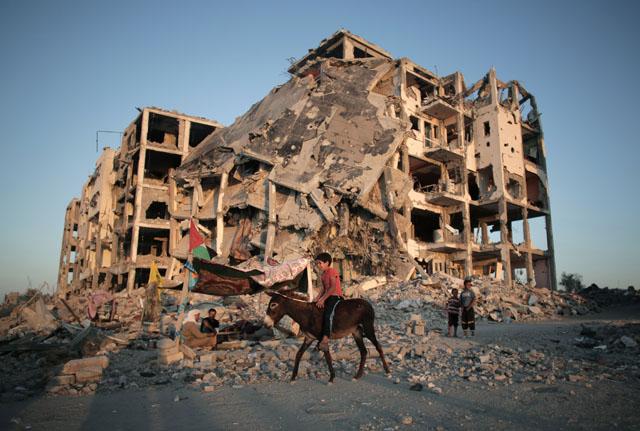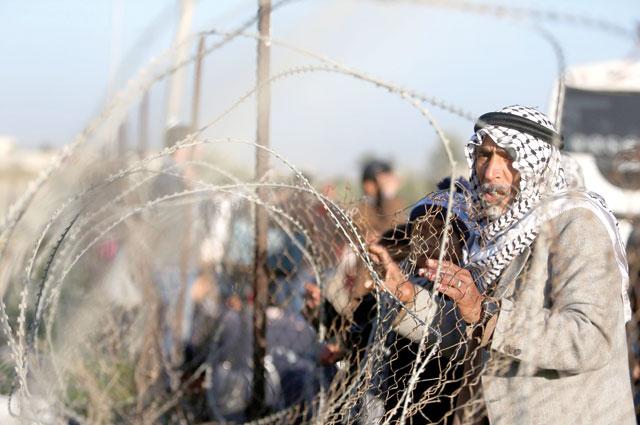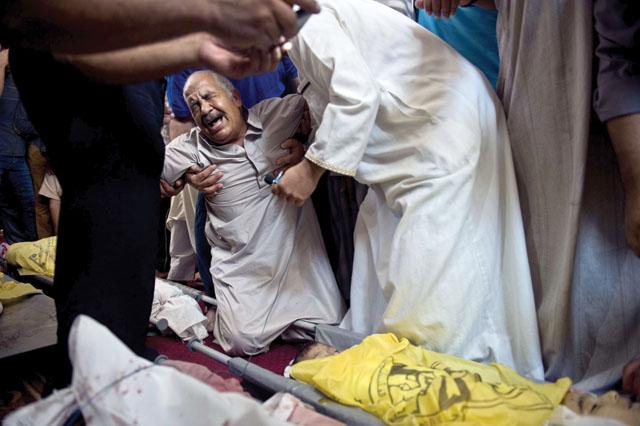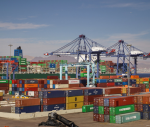You are here
Deep underground, Mohammed Deif shapes Hamas war with Israel
By Reuters - Aug 14,2014 - Last updated at Aug 14,2014

GAZA/OCCUPIED JERUSALEM — Israeli assassination attempts may have left him badly hurt and driven him deep underground, but Mohammed Deif, the shadowy leader of Hamas’ armed wing in the Gaza Strip, has emerged as a mastermind of the war with Israel.
As chief strategist behind a network of tunnels under Israel’s border, Deif caught his powerful enemy off guard with surprise attacks that caused heavy casualties. Despite punishing Israeli strikes in the month-old conflict, Hamas kept up its rocket fire, even against Tel Aviv.
Deif’s command position also gives him a voice among the Islamist movement’s leaders in steering it towards war or truce — a five-day ceasefire went into effect on Thursday. But he is said to prefer his military role to internal politics.
Few people know what Deif, believed to be in his 50s, looks like today, after at least four Israeli attempts to kill him. Past images are scarce.
Rare video footage from 2002 caught Deif covered in blood, sitting upright, dazed as a man tries to drag him away from the mangled wreckage of a car that had been hit by a missile from an Israeli helicopter.
Hamas does not comment on Deif’s health and says he has been in full command of its military wing since the 1990s.
Some Israeli reports say he is missing an eye, limbs and is confined to a wheelchair. His whereabouts are also a mystery; an Israeli minister said last month that Deif had been in hiding in his own tunnels for years.
Nonetheless, a senior Israeli intelligence officer told Reuters, Israel believes Deif is playing a major operational role in the Gaza war.
Hamas met Israeli forces with an array of tactics, including the use of tunnels to launch surprise attacks. Israel’s military lost 64 soldiers in the fighting, more than six times the number of troops killed in its previous invasion of Gaza in early 2009.
Israel says it has killed hundreds of Hamas fighters and destroyed more than 30 tunnels.
“Deif pushed the tunnel concept,” said Hamza Abu Shanab, a Gaza-based expert on Islamist groups. A Hamas source, who has known Deif since the 1990s, said Deif has been at the heart of developments inside the armed wing since 1994.
Ehud Yaari, an Israel-based fellow at the Washington Institute for Near East Policy, concurred.
“Mohammed Deif has been in a position of power the entire time,” he said. “Some may not have noticed it because he has been hiding in the shadows.”
Science student
Deif was born in Khan Younis refugee camp, according to the Hamas source. His family was poor and his father, an upholsterer, insisted the children pursue their education.
He earned a degree in science from the Islamic University in Gaza, where he studied physics, chemistry and biology. Deif also displayed an affinity for the arts.
“He was head of the university’s entertainment committee, performing on stage and putting on comedies,” the Hamas source said.
Deif joined the then new movement Hamas during the first Intifada, or Palestinian uprising, which began in 1987, and was imprisoned by Israel in 1989, spending more than a year in jail, according to some accounts.
Rising up the ranks of Hamas, Deif has topped Israel’s most wanted list for decades, held personally responsible for the deaths of dozens of Israelis in suicide bombings.
Yoram Schweitzer of Israel’s Institute for National Security Studies, described Deif’s current role as somewhere between armed forces chief of staff and defence minister.
“His personal outlook and experience have made him a tough rival,” Schweitzer said.
In a rare audio message broadcast on July 29, Deif said Hamas would continue confronting Israel until its blockade on Gaza — which is supported by neighbouring Egypt — was lifted.
“The occupying entity will not enjoy security unless our people live in freedom and dignity,” Deif said.
Despite having spoken out, Deif has no political ambitions within Hamas, preferring to focus on military issues, Abu Shanab said.
Hamas is a multi-headed organisation, with most decisions made jointly by the armed wing and a political leadership that is scattered in Israeli prisons, Gaza, Egypt and Qatar, where overall leader, Khaled Mishaal, has been based since breaking with his previous Iranian-backed Syrian hosts in 2012.
“The movement rules, there are no surprises inside Hamas — no one leader takes a decision,” Abu Shanab said.
Yaari, the Israel-based analyst, said, however, that Hamas’ armed wing is “the main force” in its collective decision making.
“Mohammed Deif has veto power, but he will not use it often,” Yaari said, adding that Deif overruled Mishaal in accepting a previous truce that led to indirect Israeli-Palestinian talks in Egypt.
Deif’s commander and mentor, according to Hamas, was Emad Akel, his predecessor as leader of its armed wing in the Gaza Strip. Akel was shot dead by Israeli troops in 1993.
Deif learned bombmaking from Yehya Ayyash, known as “The Engineer”, one of the founders of Hamas’ Izz Al Deen Al Qassam Brigades. Despite painstaking efforts to evade assassination, Ayyash was killed by Israel in 1996 in Gaza — by a mobile telephone rigged with explosives.
Determination — and caution — appear to be Deif’s watchwords. As recently as Saturday, Israel publicly threatened to find and kill him.
“His nerves are made of cold steel,” said a Hamas who has served under Deif. “When [he] decides to use a place to stay, he makes no movements. He is not curious to see the street. Instead he uses others’ ears and eyes.”
Related Articles
Mohammed Deif, the shadowy leader of Hamas' armed wing in Gaza, appears to have narrowly survived a fifth attempt to assassinate him, allowing the mastermind of the six-week war on Israel to pursue the conflict from his network of tunnels.
A letter purported to be from Mohammed Deif, the leader of Hamas' armed wing, on Thursday appealed to the Lebanese Hizbollah group to unite with Hamas in battling Israel.
Israel killed three senior Hamas commanders in the Gaza Strip in an air strike on Thursday and said it would continue to target the group’s armed leadership after a ceasefire failed.


















